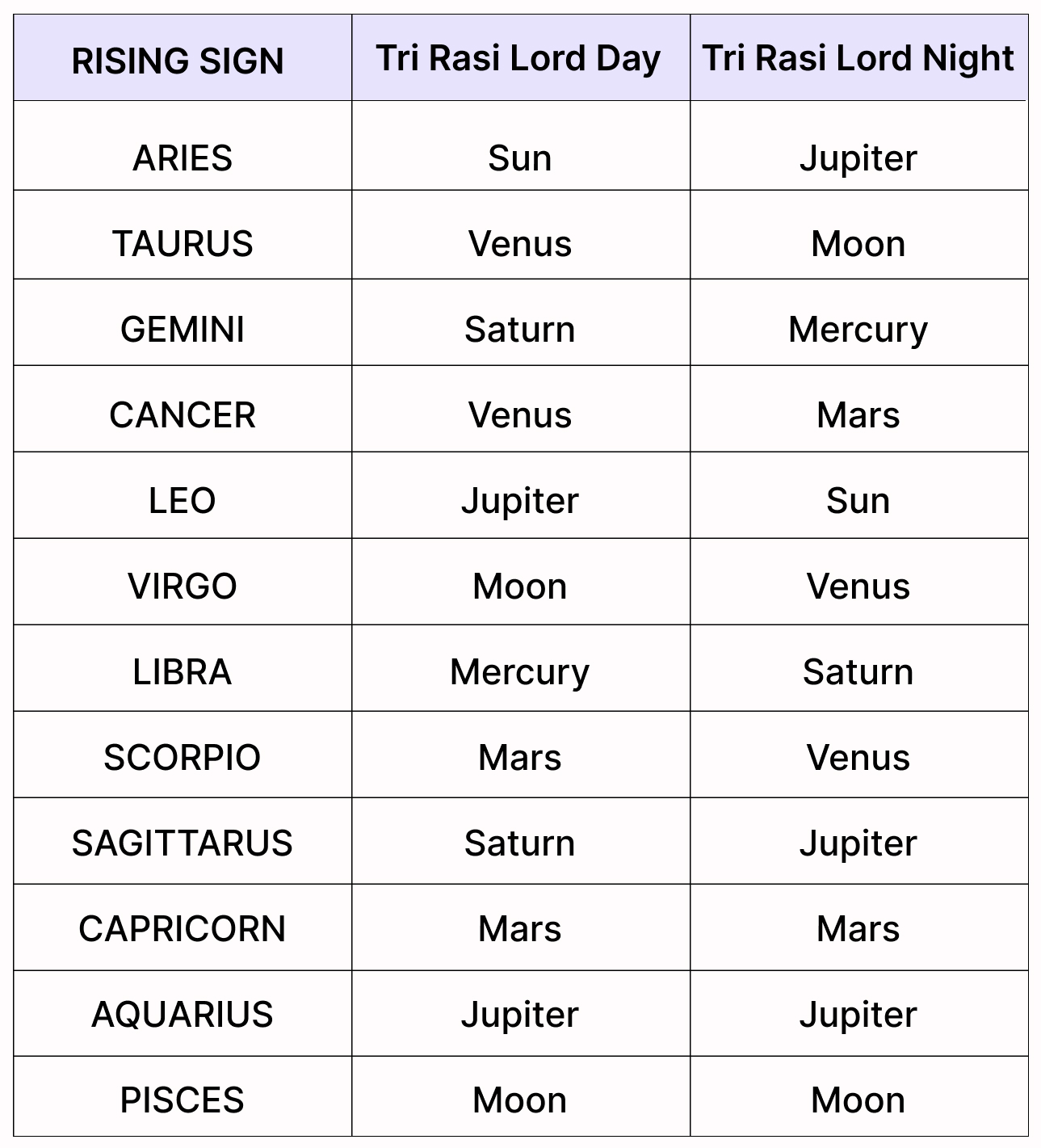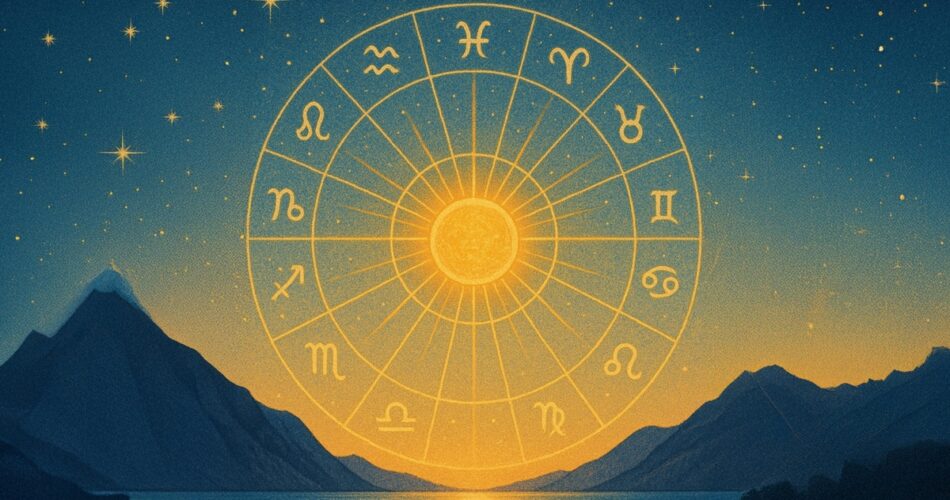Varshaphala, or literally ‘Fruit of the Year’ is a horoscope for the events of one year, cast for the moment the Sun returns to its original degree in your natal chart. Your ‘astrological birthday’ may differ by several hours from your actual birth moment, or even fall on a slightly different day, but it represents a renewal of life in all areas. The Varsha Kundali on one level is simply a transit chart, but the Sun has great importance as the central, life-giving force, and also a natural association with the archetypal year and time itself. Annual Solar Returns were the central predictive technique used in ancient Babylonian astrology, and remain a cornerstone of Tajika Shastra today.
Used primarily for individual’s forecasting, the Varsha Kundali can also be applied to countries and institutions, and the Solar Return of a national leader, for example, may have a big impact on a nation, and world events in a given year. These charts can help to decide contests such as Presidential elections, and act as a useful supplement to the natal techniques of dashas and transits.
There are different schools of thought on the Varshaphal calculation: some say the chart should be set for the individual’s birth place, while others insist it should be cast for one’s current location. The ‘relocated’ view is that if one lives in a different country or city, or is even away or travelling, then the annual chart should be set as closely as possible to that place. This school extends to the belief that consciously moving to a different location at one’s birthday can manipulate the angles on the chart and create a more favourable Solar Return for the year. The more traditional ‘birthplace’ school, alternatively, argues that a Solar Return has only truly occurred by reference to one’s place of entry into this world, and an important life experience will always arrive for us, come what may. Computer software fortunately allows us to apply all the parameters of our chosen view.
Planets in the Solar Return chart are interpreted according to their familiar symbolism, and special consideration is given to planets that fall in ‘angular houses’: 1st, 4th, 7th, 10th. These will shape the coming year most powerfully. Clearly, the Sun will always be in the exact same sign and degree each year, but its house and the planetary influences to it will vary, and prove important for our self-expression.
The Varsha Kundali is traditionally read side-by-side with one’s birth horoscope. Prediction, for good or ill, of a given Solar Return is according to the promise of the natal chart. An outstanding Solar Return may balance difficult patterns in our birth chart, while a challenging Return may be offset by the natural fortune in our birth map. A weak Moon in the Solar Return, for example, by sign and house, will be offset if the planet is strong natally, and vice-versa. Both positions need to be scrutinized. ‘Inter-aspects’ between all planets and points, natal and transiting, can be read in this way.
The position of our birth ascendant in the Solar Return gives an immediate overview of the issues of the year in prospect. For example, if our natal rising sign is in the Solar Return second house, then money and security are brought to prominence that year; in the fifth house it may be children; in the eighth house mystery and joint finances, etc. The natal Lagna and the Solar Return lagna falling in the same sign is said to be of special importance, especially if both nakshatras are the same, more so the closer to the exact rising degree. This condition, known as ‘the year of second birth’ brings unique challenges, particularly for health, as the lagna represents the physical body.
Parashari aspects can be used in Solar Returns, but traditionally, Tajika-style aspects and yogas are applied: conjunction, opposition, trine, square, and sextile.
Conjunctions 1/1 can be favourable or not, depending on the nature of the planets involved.
Oppositions 1/7 make for outright conflict or a situation at the point of breakup and radical change.
Trine 5/9 is a harmonious relationship where two planets support each other’s energy and intent.
Square 4/10 is a tense and obstructed situation where hard work and decisions are required to move forward.
Sextile 3/11 is a potential opportunity, which requires some effort and initiative to bring to fruition.
2/12 and 6/8 are ‘no aspect’ situations can be jarring and difficult, where the two planets have no connection or common ground.
Different combinations of these aspects create the sixteen Tajika Yogas, which are also applied in Tajika Prasna.
The Five Office Bearers – Panchadhikari – and Lord of the Year – Varshesha
With both the Solar Return and the natal chart planets being interpreted, it is useful to locate the main factors. Five major points compete for status as the most influential planet in the Varshaphal, which becomes The Lord of the Year:
The Muntha Lord (see above) The ruling planet of our progressed ascendant when placed in the Solar Return
The Natal Lagna Lord
For example, If a native with Sagittarius lagna has Jupiter in Cancer in an annual Solar Return, then it is likely to be strong and favourable, especially if placed in a good house.
Varshaphal Lagna Lord
Tri-Rashi Lord – this is the ruling planet of the Solar Return lagna, depending on whether the chart is a day or night-time:

Dina Ratri Lord – The ruler of the Varshaphal Sun sign for a daytime Solar Return, or the ruler of the Moon for a night-time chart.
Score-based calculations, like Pancha Vargeeya Bala (‘Five Divisions’), are applied to determine the strongest of the five Office Bearers, and this becomes the final Varshesha, or Year Lord. This score is comprised of:
Kshetra Bala – A planet’s house, whether strong or weak, friend or enemy
Uccha Bala – A planet’s proximity to its point of maximum exaltation
Hudda Bala – An unequal fivefold division of a sign, each owned by one of the planets from Mercury to Saturn. (These divisions are known as ‘terms’ or ‘bounds’ in Western astrology).
Drekkana Bala – Drekkana are a threefold division of a sign with different rulers (known as ‘decanates’ in Western astrology)
Navamsha Bala – Strength is given to a planet in its own navamsha
These categories are weighted, and a planet’s strength and ability to exert its influence is either exceptional, full, medium, or weak.
A planet must also have a direct aspect or association with the Varshaphal lagna to become Year Lord. If no Office Bearer aspects the lagna, or all are weak by points scored, then the Muntha Lord automatically becomes Year Lord. The position of the Year Lord by sign, house, and disposition, represents a key area of life in the coming twelve months.
DASHAS
Mudda Dasha is the commonest Dasha system used in Varshaphala, a scaled-down nakshatra-based system, with the same order and proportions as Vimshottari, except fitting into one year (rather than 120 years). Dashas bring a more Parashari-style astrology into Varshaphala.
Yogini Dashas are also used in Varshaphala, with a complete cycle of 36 years being compressed down to 360 days.
Sahams – These are a collection of sensitive points relating to different areas of life, known in Western Astrology as (Arabic) Parts or Lots. Sahams are created using formulas, ie, addition and subtraction of the longitudes of relevant planets. For example, the Part of Fortune in day charts uses: Ascendant + Moon – Sun, and for night charts, Ascendant + Sun – Moon.
The number of Sahams is generally 52 in Tajika Shastra, like Fortune, Spirit, Marriage, Travel, Health, etc, which create degrees with their own strengths and weaknesses relating directly to these specific affairs.


